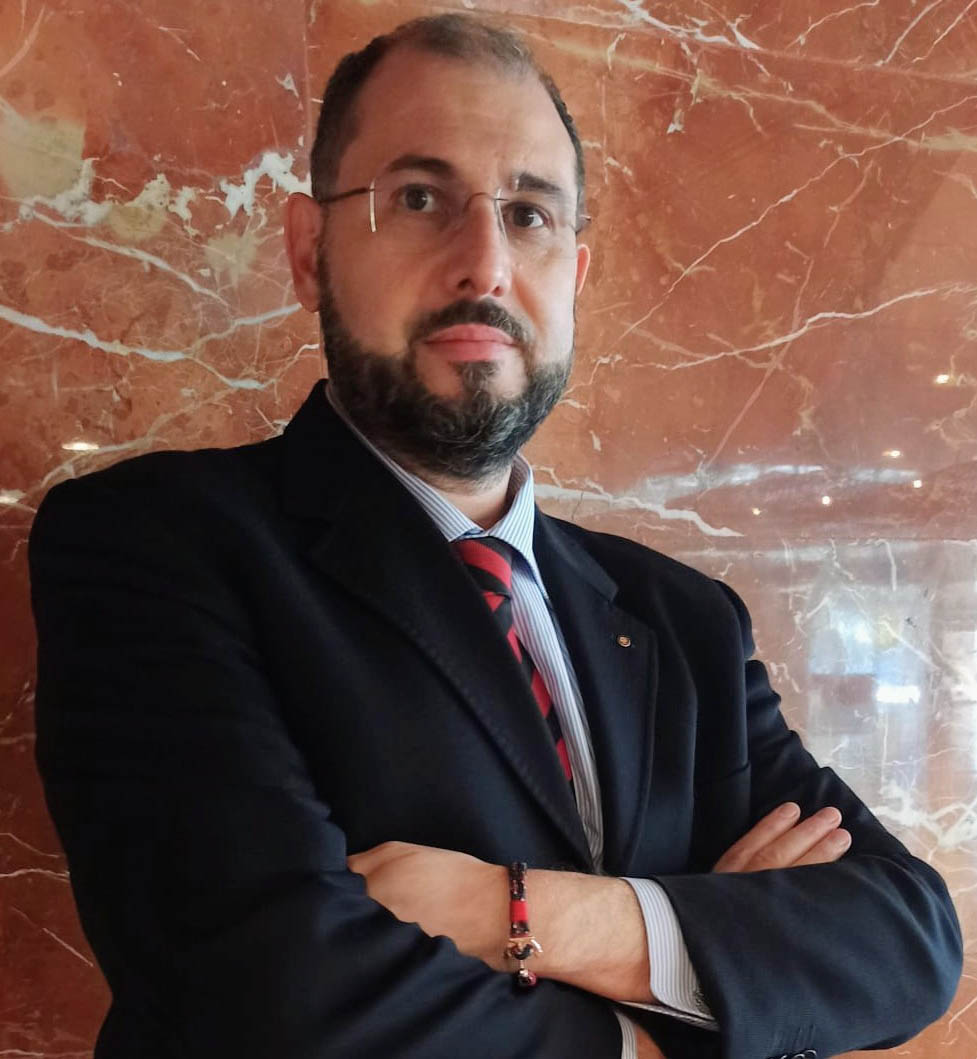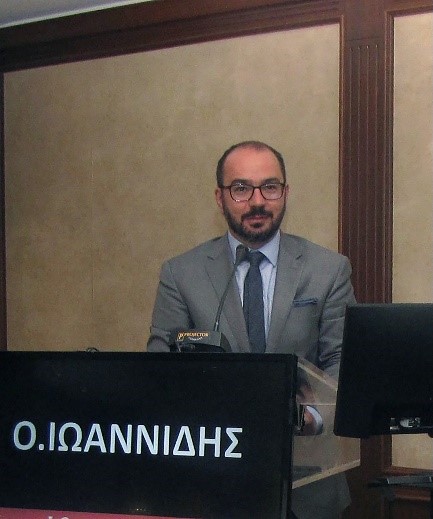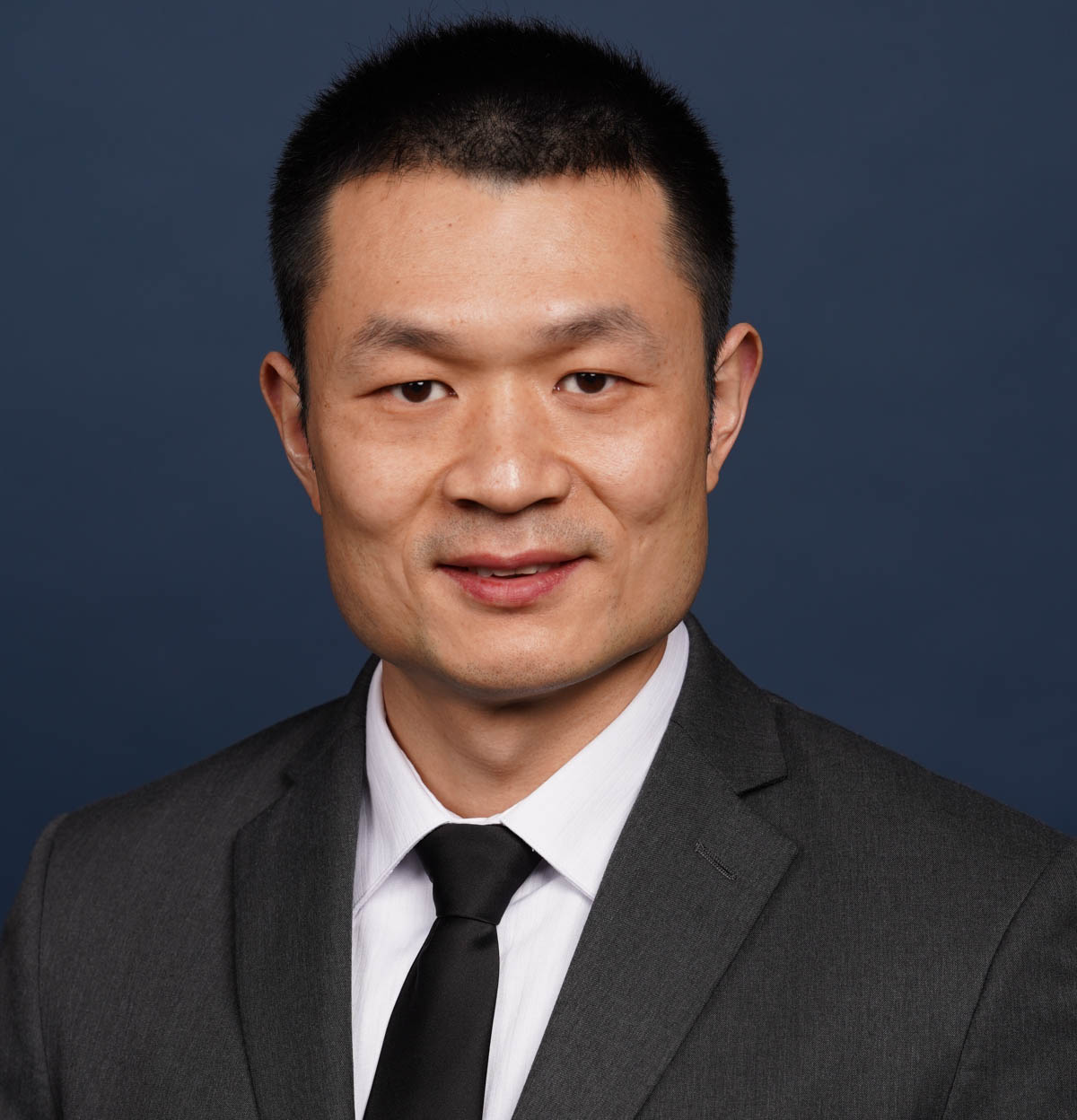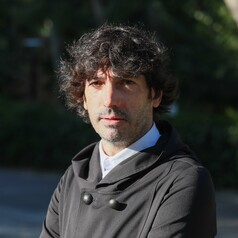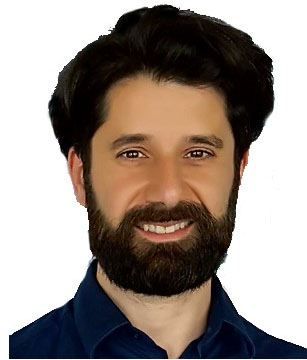Invited Speakers
Dr. Luca Bertolaccini, MD PhD FCCP
Division of Thoracic Surgery, IEO, European Institute of Oncology IRCCS, ItalySpeech Title: Preoperative and Postoperative Risk Classification in Synchronous Oligometastatic Non-Small Cell Lung Cancer
Dr. Jinwei Zhang
Institute of Biomedical and Clinical Sciences, Medical School, College of Medicine and Health, University of Exeter, UKSpeech Title: Targeting the WNK-SPAK/OSR1 Pathway and Cation-Chloride Cotransporters for Diseases Therapy
Abstract: The SLC12 family of cation-chloride-cotransporters (CCCs) comprises of potassium chloride cotransporters (KCCs)-mediated Cl- extrusion and sodium potassium chloride cotransporters (N[K]CCs)-mediated Cl- loading. The CCCs play vital roles in cell volume regulation and ion homeostasis. In recent years, there have been considerable advances in our understanding of CCCs control mechanisms, particularly via the pathway containing the with-no-lysine [K] (WNK) and its downstream target kinases, SPS/Ste20-related proline-alanine-rich kinase (SPAK) and oxidative stress responsive 1 (OSR1) and their upstream E3 ubiquitin ligase complex comprising Kelch-like 3 (KLHL3) and Cullin 3 (CUL3), which has led to the discovery of novel inhibitory molecules. Our work has subsequently led to the development of a drug-like molecules targeting WNK-SPAK kinases, for the treatment of human diseases, e.g. Hypertension, Stroke etc..
Keywords: Cation-chloride-cotransporters; CUL3/KLHL3-WNK-SPAK/OSR1; Kinase inhibitors; Hypertension and Stroke
Dr. Orestis Ioannidis
4th Department of Surgery, Medical School, Aristotle University of Thessaloniki, General Hospital "George Papanikolaou", Thessaloniki, GreeceSpeech Title: Use of indocyanine green fluorescence imaging in the extrahepatic biliary tract surgery
Abstract: Cholelithiasis presents in approximately 20 % of the total population, ranging between 10% and 30 %. It presents one of the most common causes for non malignant surgical treatment. The cornerstone therapy is laparoscopic cholecystectomy, urgent of elective. Laparoscopic cholecystectomy is nowadays the gold standard surgical treatment method, however bile duct injury occurred to as high as 0.4-3% of all laparoscopic cholecystectomies. The percentage has decreased significantly to 0.26-0.7% because of increased surgical experience and advances in laparoscopic imaging the past decade which have brought to light new achievements and new methods for better intraoperative visualization such as HD and 3D imaging system. However, bile duct injury remains a significant issue and indocyanine green fluorescence imaging, mainly cholangiography but also angiography, can further enhance the safety of laparoscopic cholecystectomy as it allows the earlier recognition of the cystic and common bile duct, even in several times before dissecting the Callot triangle. Fluorescence cholangiography could be an ideal method in order to improve bile tree anatomy identification and enhance prevention of iatrogenic injuries during laparoscopic cholecystectomies and also it could be helpful in young surgeons training because it provides enhanced intraoperative safety, but however this method does not replace CVS. Finally, our ongoing current study results comparing intravenous to direct administration of ICG in the gallbladder will be presented.
Keywords: Indocyanine Green (ICG), Fluoresence, Image Guided Surgery
Dr. Kangning Ren
Associate Professor, Department of Chemistry, Hong Kong Baptist University, ChinaSpeech Title: Novel microfluidic approach for phenotypic antimicrobial susceptibility testing
Abstract: Antimicrobial resistance (AMR), a phenomenon where microbes become resistant to antibiotics, is greatly sped up by misusing antibiotics in modern healthcare system, as well as in the environment by overusing antibiotics in animal husbandry, etc. By measuring the resistance of pathogens in a sample to different drugs, antimicrobial susceptibility tests (ASTs) can effectively reduce the misuse/overuse of antibiotics. However, AST is not widely adopted in practice because of the significant limitations of current methods, such as low speed and low efficiency of conventional methods, and high cost of advanced methods, not to mention the infeasibility in polymicrobial AST and drug combinations. Herein, we present a two-stage culture-based AST strategy based on microfluidic technology. For the first stage, we developed a “barcode” microfluidic system which can perform rapid AST at low cost with minimal requirement on facility environment. This method can be used to screen samples onsite within 3 hours to report suspected samples containing drug-resistant bacteria, which can be sent to advanced laboratory for further analysis. For the second stage, we developed a “cell-on-gel” technology for advanced AST. This design generates a stable linear 2D gradient of drugs along a hydrogel chip surface, which can be used to test the synergistic effect of drugs and perform polymicrobial AST of mixed bacteria without pre-isolation. Based on single-cell imaging analysis, AST can be completed within 3 hours. In this way, our two-stage platform can realize both on-site mass screening of AMR at low cost, and advanced AST in testing laboratories.
Keywords: antimicrobial resistance, antimicrobial susceptibility test, barcode, microfluidic device, point-of-care.
Acknowledgements:
This work was supported by NSFC (81973288, 51773173), HKRGC (12301720, T12-201/20-R, RMGS 2020_4_01), and SZSTC (SGDX20190816230207535).
Prof. Igor Pantić
Department of medical physiology, Faculty of Medicine, University of Belgrade, SerbiaUniversity of Haifa, Israel
Speech Title: Artificial Intelligence for Detection of Subtle Morphological, Physiological and Pathophysiological Changes in Cell Nuclei
Abstract: Rapid development of machine learning and artificial intelligence in recent years has led to the development of fast, sensitive and accurate biosensors in the field of experimental physiology and pathology. Some of the new and innovative technologies can be successfully used to detect and identify discrete structural and functional changes in nuclear chromatin. It is possible that certain artificial intelligence algorithms can be trained to recognize early changes associated with programmed cell death, oxidative stress or some other aspects of DNA damage. Approaches based on random forest, support vector machine, logistic regression and principal component analysis may also be used to detect and quantify certain aspects of cellular senescence. Hereby we present our recent research on the application of machine learning in experimental physiology and pathophysiology. We particularly focus on computational approaches based on fractal analysis, gray level co-occurrence matrix analysis and discrete wavelet transform. We present the recent findings indicating that these innovative computational strategies can be applied for measurement of changes in chromatin distribution after induction of cell damage by exposure to different chemical agents.
Keywords: Artificial intelligence, Machine learning, Physiology, Pathophysiology, Chromatin
Acknowledgements:
This research was supported by the Science Fund of the Republic of Serbia, grant No. 7739645 “Automated sensing system based on fractal, textural and wavelet computational methods for detection of low-level cellular damage”, SensoFracTW.
Dr. Rui Wang
Assistant Professor, Department of SurgeryCase Western Reserve University
University Hospitals Cleveland Medical Center
Case Comprehensive Cancer Center, USA
Speech Title: Crosstalk between the liver microenvironment and metastatic colorectal cancer
Abstract: Patients with metastatic colorectal cancer (mCRC) have substantially worse outcomes than those with primary and localized CRC. Over 80% of CRC metastases occur in the liver, which has a unique endothelial cell (EC)-rich microenvironment. Distinct from precedent EC studies focused on angiogenesis and vascular remodeling, we pioneered the discovery that liver ECs secrete soluble factors to promote CRC growth and chemoresistance in a paracrine fashion. Specifically, we found that human epidermal growth factor receptor 3 (HER3, also known as ErbB3) is a key mediator of EC-induced mCRC growth in the liver. However, we found that liver ECs activate HER3 independent of the only known HER3 ligand, neuregulins. Here, we made the paradigm-shifting discovery that leucine rich alpha-2-glycoprotein 1 (LRG1) secreted from liver ECs is a novel HER3 ligand that activates CRC-associated HER3 and promote CRC growth. neutralizing or depleting secreted soluble LRG1 attenuates CRC tumor growth in xenograft tumor models and prolonged overall survival in mic with syngeneic orthotopic CRC liver metastases. Mechanistically, LRG1-HER3 activates the PDK1-RSK2-eIF4 axis, distinct from neuregulins and independent of AKT, to promote protein synthesis and CRC cell growth. This line of investigation determined a pro-tumor role of the surrounding EC microenvironment in the liver, and identified a key mediating signaling axis that can be targeted by novel therapeutics for treating patients with mCRC.
Dr. Maja Rosič
Specialist of gynecology and obstetrics, Gynecologic Health Institution Rosič, Ptuj, SloveniaSpeech Title: Sonographic assessment of the efficacy of Essure hysteroscopic sterilization
Abstract: Essure (Bayer AG, Leverkusen, Germany) is a hysteroscopic sterilization procedure. The efficacy of the sterilization procedure is assessed by a confirmation test, which is performed to evaluate the micro-insert position or tubal occlusion. Of all different imaging techniques, a confirmation with hysterosalpingography (HSG) is the reference standard. 2-dimensional (2D) transvaginal ultrasonography was proposed to be an adequate noninvasive method for assessment of micro-insert position, however when sterilization is complicated or when the confirmation with 2D transvaginal ultrasonography is unsatisfactory, HSG is still indicated. A few years ago, hysterosalpingo-foam sonography (HyFoSy) was introduced and was suggested to be a possible less invasive alternative to HSG. Our prospective study included patients, who underwent three different confirmation tests after Essure hysteroscopic sterilization. The purpose of our study was to evaluate the accuracy of sonographic imaging techniques for assessment of the efficacy of Essure.
Keywords: hysteroscopic sterilization, 2D transvaginal ultrasonography, hysterosalpingo-foam sonography, hysterosalpingography
Acknowledgements: We would like to thank the University Medical Centre Maribor for help and support.
Dr. Josef Jampílek
ProfessorDepartment of Analytical Chemistry, Faculty of Natural Sciences, Comenius University in Bratislava, Slovakia;
Department of Chemical Biology, Faculty of Science, Palacky University Olomouc, Czech Republic
Speech Title: Investigation of Novel Halogenated Cinnamanilides
Abstract: One of the basic strategies in the search for new bioactive agents is inspiration from natural compounds such as cinnamic acid. It is an aromatic acid with a long history of use as an additive in plant fragrances and spices. Its derivatives are important promising substances with great potential in the search for new pharmacologically active agents. Cinnamic acid and its derivatives have attracted the attention of scientists in recent decades due to low toxicity and a wide range of biological activities such as antibacterial, antiviral, anti-inflammatory, cytotoxic, antidiabetic, hepatoprotective, antioxidant, neuroprotective, anxiolytic, and antituberculotic. Recent studies investigating the antimicrobial activities of an extensive series of variously substituted cinnamic anilides have revealed compounds with promising anti-infective potential. Since the introduction of a halogen into the molecule structure is known to increase the anti-invasive activity, new halogenated series of anilides were designed and their properties are discussed in this contribution.
Keywords: multi-target compounds, rational design, cinnamic acid derivatives
Acknowledgements: This study was supported by grant projects UK/289/2022, UK/320/2022 and APVV-17-0373.
Dr. Pedro Peris-Lopeza
Associate Professor, Computer Science Department, Carlos III University of Madrid, SpainSpeech Title: ECGsound for Human Identification
Abstract: Novel biometric systems have emerged in recent years as an alternative or complement to traditional identification systems based on passwords (something you know) or tokens (something you have). In this sense, biopotentials signals such as electrocardiograms (cardiac signal) or electroencephalograms (brain signals) have attracted many researchers' attention. This work proposes an innovative identification technique based on electrocardiograms (ECGs) and musical features (e.g., dynamics, rhythm or timbre) commonly used to characterise audio files. In a nutshell, after pre-processing ECG recordings, we transform them into audio wave files, split them into segments, extract features into five musical dimensions and finally fed a classifier with these instances. The proposal's workability is confirmed by experimentation using the MIT-BIH Normal Sinus Rhythm Database with 18 subjets and offering an accuracy of 96.6 and a low error rate with FAR and FRR 0.002 and 0.004, respectively.
Keywords: ECG; Audio; Biometrics; Identification; Artificial Intelligence; Pattern Recognition
Acknowledgements: (Optional)
This work was supported by Leonardo Grant for Researchers and Cultural Creators, BBVA Foundation (P2019-CARDIOSEC); by the Spanish Ministry of Science, Innovation and Universities grant PID2019-111429RBC21(ODIO); and by the Comunidad de Madrid (Spain) under the project CYNAMON (P2018/TCS-4566), co-financed by European Structural Funds (ESF and FEDER).
Dr. Xiaoran Yin
Associate Professor and Deputy Chief PhysicianOncology Department, the Second Affiliated Hospital of Xi'an Jiaotong University, Xi’an, China
Speech Title: LGR5+/CD44+ cells endow cancer stemness and EMT property through WNT/TGF-β crosstalk predicting poor prognosis in gastric adenocarcinoma
Abstract: Background: Gastric cancer is the fifth most common and the fourth most lethal cancer worldwide. Cancer stem cells (CSCs) account for proliferation, invasion, metastasis and drug resistance with the potential to be an effective target for evaluation, diagnosis and treatment of cancer. Our study evaluated the roles of LGR5 as a valuable marker of CSCs in the diagnosis and prognosis of gastric adenocarcinoma.
Methods: Transcription profiles and survival information of 1035 patients with gastric adenocarcinoma were obtained from the GEO (Gene Expression Omnibus) and The Cancer Genome Atlas (TCGA) databases. LGR5, CD24 and CD44 expressions were measured by immunohistochemical on pathological specimens of gastric adenocarcinoma patients in our hospital. Diagnostic and survival information was analysed between different LGR5/CD44 expression level groups by χ2 test and Kaplan-Meier method. The serum-free culture was performed to obtain CSCs from gastric adenocarcinoma cell lines. LGR5, WNT/β-catenin pathway and epithelial-mesenchymal transition (EMT) related expressions were examined by Western-blot and immunofluorescence.
Results: The co-expression of LGR5 and CD44 is associated with poor differentiation and prognosis in gastric adenocarcinoma patients. Serum-free culture purified CSCs showed upregulated expression of LGR5 and CD44. Further investigation revealed that elevated LGR5 expression was accompanied by the activation of WNT/β-catenin and TGF-β/Smads, except for Smad4 downregulation. Immunofluorescence exhibited an increase of p-Smad3 under GSK-3β inhibition, suggesting the crosstalk between the LGR5/β-catenin pathway and the TGF-β/Smads pathway by activating GSK-3β and inhibiting Smad4 to maintain the stemness and EMT characteristics.
Conclusion: LGR5+/CD44+ marks CSCs of gastric adenocarcinoma, indicating poor differentiation and prognosis. LGR5 activates the WNT/β-catenin pathway and forms the crosstalk with the TGF-β/Smads pathway, maintaining the stemness of CSCs. LGR5 can be a diagnostic and therapeutic target of CSCs for the theranostics on gastric adenocarcinoma.
Keywords: LGR5, gastric adenocarcinoma, cancer stem cell, EMT, WNT/TGF-β crosstalk
Acknowledgements: This study was supported by the National Natural Science Foundation of China (NSFC) (81802453), the Key Research and Development Program of Shaanxi Province (2019SF-093), and the Basic Scientific Research Interdisciplinary and Cooperation Project of Xi'an Jiaotong University (1119293853).
Dr. Jakub Dalibor Rybka
Associate professorAdam Mickiewicz University in Poznań, Poland
Speech Title: Novel Approach to Meniscus Regeneration
Abstract: The knee meniscus plays an indispensable role in articular surface protection, shock absorption, and stress transmission. Meniscus injuries are extremely prevalent, with an annual incidence of 66 to 70 per 100,000 people. Due to limited vascularization, the regenerative capacity of the meniscus is relatively low and restricted to the most vascularized outer regions. The most commonly performed treatment involves suturing or removal by partial or total meniscectomy. However, meniscectomy significantly increases the incidence of osteoarthritis (OA) later in life by elevating the contact pressure on the tibial plateau. Approximately 50% of patients with meniscal injuries develop OA between 10 and 20 years after the injury. Therefore, optimal treatment options
should preserve or mimic the mechanical properties of the meniscus. 3D bioprinting belongs to the family of additive manufacturing (AM) processes that utilize computer-aided design (CAD) for the generation of 3D models through layer-by-layer deposition. The constructs are printed with bioink comprised of viable cells, biomaterials, and additional biological substances. These artificial, cell-laden scaffolds promote and support new tissue formation by providing a suitable environment for cell migration, proliferation, differentiation, and ensure a proper extracellular matrix (ECM) secretion [6,7]. During the presentation a novel approach (based on 3D bioprinting) of regenerative medicine towards the meniscus will be shown.
Keywords: Applied Biotechnology; Bionanotechnology; 3D Bioprinting; Tissue Engineering
Acknowledgements: This work was supported by the National Centre for Research and
Development TECHMATSTRATEG-III/0027/2019-00 grant.
Dr. Camillo Porcaro
Professor, Department of Neuroscience and Padova Neuroscience Center (PNC), University of Padova, ItalySpeech Title: Dynamics of the ‘cognitive’ P3b brain wave at rest for AD prediction in MCI
Abstract: Alzheimer’s disease (AD) is the most common cause of dementia that involves a progressive and irrevocable decline in cognitive abilities and social behaviour, thus annihilating the patient’s autonomy. Among the neurophysiological markers of attention and cognition, one of the sub-components of the ‘cognitive brain wave’ P300 recordable in an odd-ball paradigm –namely, the P3b is extensively regarded as a sensitive indicator of cognitive performance. Several studies have reliably shown that changes in the amplitude and latency of the P3b are strongly related to cognitive decline and ageing, both healthy and pathological. Here, we used a P3b spatial filter to enhance the electroencephalographic (EEG) characteristics underlying 175 subjects divided into 135 mild cognitive impairment (MCI) subjects, 20 elderly controls (EC), and 20 young volunteers (Y). The Y group served to extract the P3b spatial filter from EEG data, which was later applied to the other groups during resting conditions with eyes open and without being asked to perform any task. The group of 135 MCI subjects could be divided into two subgroups at the end of a month follow-up: 75 with stable MCI (MCI-S, not converted to AD) and 60 converted to AD (MCI-C). The P3b spatial filter was built using a signal processing method called Functional Source Separation (FSS), which increases the signal-to-noise ratio by using a weighted sum of all EEG recording channels rather than relying on a single or a small subset of channels. A clear difference was observed for the P3b dynamics at rest between groups. Moreover, a machine learning approach showed that P3b at rest could correctly distinguish MCI from EC (80.6% accuracy) and MCI-S from MCI-C (74.1% accuracy), with an accuracy as high as 93.8% in discriminating between MCI-C and EC. Finally, a comparison of the Bayes factor revealed that the group differences among MCI-S and MCI-C were 138 times more likely to be detected using the P3b dynamics compared with the best-performing single electrode (Pz) approach. In conclusion, we propose that P3b, as measured through spatial filters, can be safely regarded as a simple and sensitive marker to predict the conversion from an MCI to AD status, eventually combined with other non-neurophysiological biomarkers for a more precise definition of dementia having neuropathological Alzheimer characteristics.
Keywords: P300, P3a/P3b, Aging, Alzheimer’s disease (AD), Mild Cognitive Impairment (MCI), Blind Source Separation (BSS), Functional Source Separation (FSS), Electroencephalography (EEG), Support vector machine (SVM)
More details will be updated...

